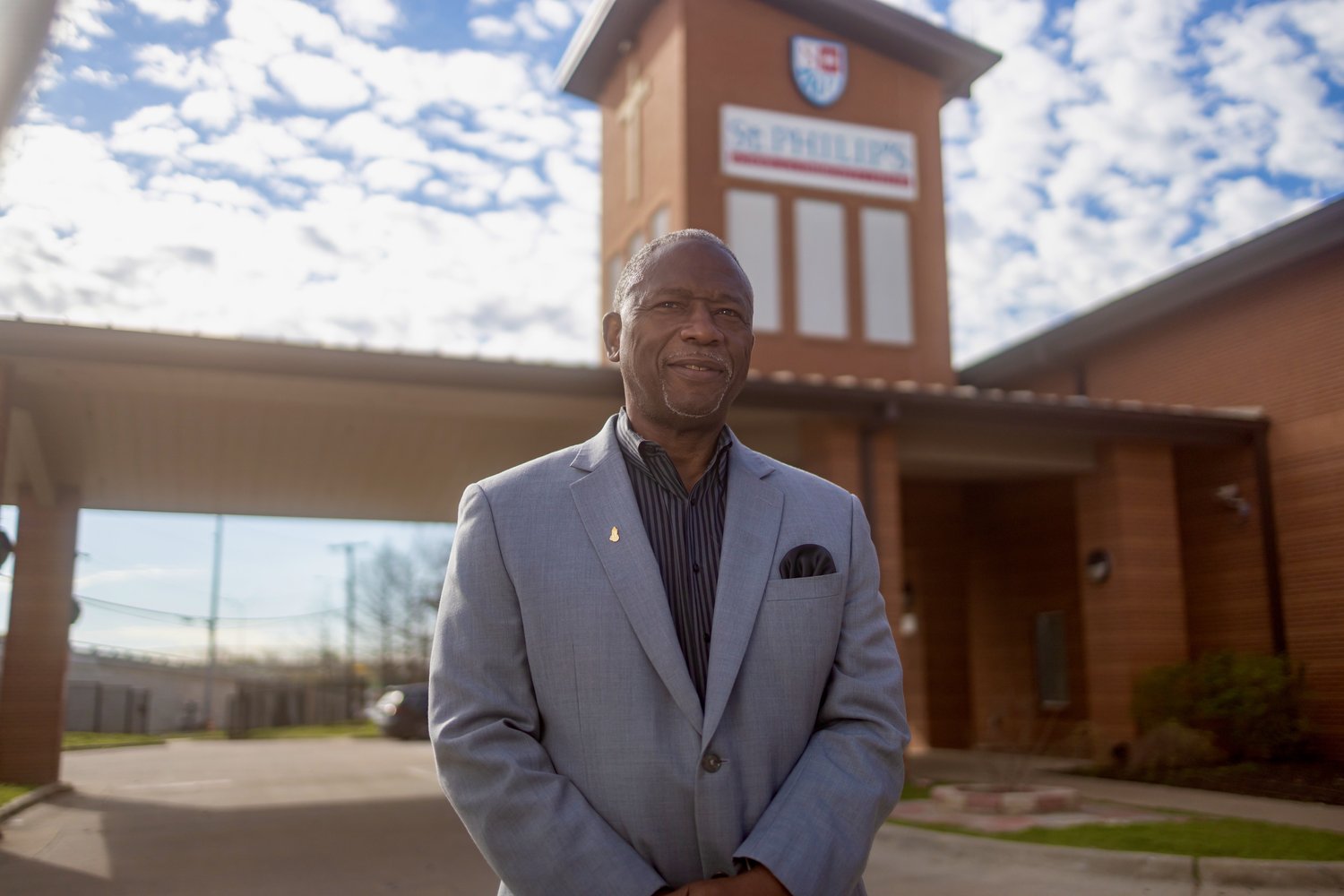Story by Peter McKee. Photos by Jerry Crayton.
There is a core belief that Dr. Terry Flowers has instilled in St. Philip’s School and Community Center in South Dallas during his nearly 40-year tenure as headmaster: “Service is in every human’s DNA.” Students are taught that education has a purpose beyond a degree, and that purpose is to enable you to serve and love other people well. It is evident that Dr. Flowers has practiced what he preaches at St. Philip’s.

This philosophy of St. Philip’s and Dr. Flowers has been encapsulated through the actions the school took a few years after Dr. Flowers’ arrival. In 1987, the school found itself at a crossroads, and it was through a deep commitment to service and love of neighbor that St. Philip’s built a foundation for its positive impact in South Dallas for decades to come.
St. Philip’s had just built a new building, replacing a portable structure that had been used for the past 22 years– even though it was only meant to be used for five– and while the new building was beautiful and brought a sense of hope to the South Dallas community, it also raised a dilemma. The new facility, by comparison, showed that the surrounding neighborhood was deteriorating as it was also replete with crack houses, liquor stores, and gang activity.
So, St. Philip’s, ever responsive to the voice of the community, decided to commission a survey to get a sense of what lay ahead for their surrounding neighborhood. Sociologists from the University of Mississippi conducted the study and reviewed their findings. While the new building was beautiful and the services that St. Philip’s offered to their neighbors were exceptional, the sociologists determined that there was no plan for their area, and they may have been better off with their new building in another neighborhood.
However, the sociologists also discovered that the St. Philip’s School had a remarkable relationship with its neighbors. The neighbors, they said, had a lot of respect for the school and fully endorsed the goals that it was working to achieve. The sociologists proposed to Dr. Flowers and the St. Philip’s School that they may be able to leverage that credibility in order to make a great impact for positive change in their neighborhood.
The next thing that St. Philip’s did was take the results to their neighbors, and while some of the findings were not surprising, what to do next created a controversy. Two factions formed; one faction perceived the survey as an initiative to push them out of the neighborhood. A similar situation occurred in Fair Park when developers said they would improve Fair Park for the residents, only for the residents to lose their neighborhood and be forced to move. This faction was hesitant about change, for fear of history repeating itself.
The second faction believed that something needed to be done, and that the need for change was more than apparent. Others were in the middle, caught between the pretense of false promises and the hope of future change.
In the midst of the stalemate, Dr. Flowers and others in the neighborhood were able to rally support for positive change behind a clarion call to action. “You are a mile and a half from the skyline of Dallas,” they said. “The skyline will come for you one day. Will you be in a position to influence how it comes? Either you are going to plan for yourself, or someone is going to plan for you.”
The support they rallied led to the Neighborhood Development Corporation, which focused on economic development, housing, and public safety in their South Dallas community. Over time, people were able to stay in the neighborhood because St. Philip’s had served as an agent of change, advocating for their neighbors and building fellowship in South Dallas. There were committee meetings to discuss city plans, neighborhood cleanups, fundraising for home repairs, and classes to walk residents through their taxes. All these efforts were the pathways that were built to assist the families in their community.
Dr. Flowers’s commitment to service as the headmaster of St. Philip’s School stems from his belief that God has given service as a purpose for all people, and that God intends each person to help the people around them. And today, service continues to be a cornerstone of the school’s project-based learning curriculum, where all subjects work in conjunction with a “helping others” mindset, and the students can see the practical and relational implications of math, science, art, history, and language used to benefit others. With the community center also on the school’s campus, the students consistently implement their service and seek to solve problems as a class each year. They also present what they learned and achieved to the community.
Dr. Flowers’s goal at St. Philip’s School has been for it to be “the ultimate model for successful, school-based community transformation.” They will soon add another layer to their transformative model by adding a new building dedicated to teaching students the arts. St. Philip’s, already with a myriad of flourishing athletic programs, is seeking to expand their curriculum to foster young creativity in their neighborhood as well.
The impact that Dr. Flowers and St. Philip’s have had on the community in South Dallas has been immeasurable in the lives of the neighbors and residents around them. If you want to learn more about the school and community center and how you may help, you can visit their website.
Sign up with your email address to receive good stories, events, and volunteer opportunities in your inbox.
Notifications